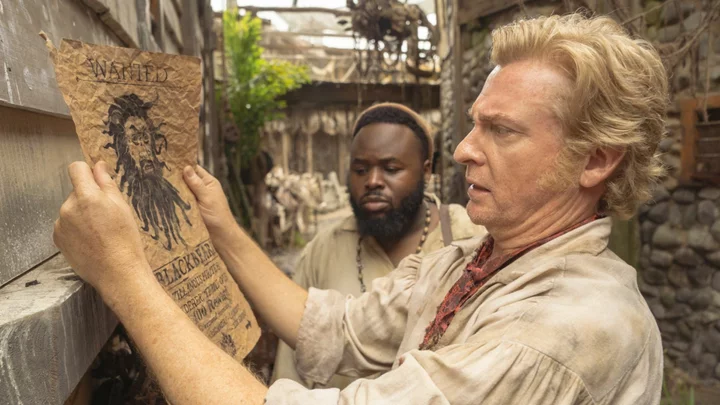So much of what we understand about relationships and love comes not only from the people we know, but the TV shows, movies, and books we consume. The problem is, pop culture doesn’t always get everything right, and examples of polyamory and open relationships, in particular, aren’t always accurate. Now that ethical non-monogamy (ENM) has become a more common term and practice in modern relationships, it’s time we have a conversation about the differences between polyamory and open relationships — because it can get confusing.
There’s definitely been a general culture shift in recent years toward both talking about and practicing ethical non-monogamy. On TikTok, the topic of ethical non-monogamy has over 1.2 billion views, and the #polyamory hashtag has over 3.1 billion views. According to a 2021 study published in the Frontiers in Psychology journal, 4% to 5% of the U.S. population practices polyamory. Polyamory has seen a significant rise among Gen Z, in particular, so much so that in late 2022, Hinge introduced a relationship type label on its dating app where users can let others know the relationship style they are looking for, be it monogamous or non-monogamous.
The thing is, many people tend to use relationship type labels interchangeably, when in reality, they all have their own unique descriptions. Two big ones that people tend to conflate are open relationships and polyamory. Even though both fall under the umbrella of ENM, polyamory and open relationships are two different things. Let’s break it down.
What is polyamory?
“Polyamory is a lifestyle where one person has multiple loving relationships with other people,” Marla Renee Stewart, MA, certified sexologist at Velvet Lips Sex Ed and co-founder of the Sex Down South Conference says. “Some people also feel that it is a sexual orientation in the way that people are relating to one another.”
For many people, being polyamorous is an important part of their identity, not just a word to describe having multiple sexual or romantic partners at the same time. “Being polyamorous feels hard-wired to their love-lives,” says sexuality educator Aida Manduley, LICSW.
Though the term polyamory has increased in popularity in recent years, the practice of having multiple romantic and sexual partners at once isn’t new. “Although the lifestyle is quite common all around the world, the term ‘polyamory’ is fairly new,” Stewart says. “There are many different types of polyamorous relationships, such as solo polyamory, polygamy, polyandry, polygyny, relationship anarchist, etc.”
If you delve deeper into the poly community, you’ll find a wealth of terms used to describe the different intricacies and styles of polyamory, all of which are rooted in open and honest communication.
What is an open relationship?
The open relationship label is commonly used in two different ways, according to Terri Conley, Ph.D, a professor of psychology at the University of Michigan, who focuses on sexual behavior and socialization. In most cases, it’s used to encompass all forms of consensual non-monogamy — like polyamory, swinging, and the narrower definition of an open relationship.
“Open relationships is the umbrella term that is used for people who have romantic, loving, and/or sexual relationships with people,” Stewart says. “Relationship lifestyles such as polyamory, swinging, and monogamish relationships fall under this umbrella.”
However, when being used to describe a specific relationship, Dr. Conley explains, “open” generally refers to the idea that there’s a primary partnership of two people who have given each other consent to have physical relations with people outside of their relationship. People in an open relationship typically don’t necessarily think of non-monogamy as part of their identity as much as a personal preference. It tends to be less about making romantic connections with other people, and more about exploring physical intimacy with others outside of a main partner.
What are the differences between polyamory and open relationships?
The big difference, then, comes down to commitment. For people in an open relationship, typically, you can make physical connections outside of your main relationship, but ultimately you stay emotionally committed to one primary partner. Folks in open relationships are usually not looking for another person to love or build a second relationship with, and many likely wouldn’t introduce the people they have sex with to their primary partner, according to Dr. Conley.
“Open relationships are more likely to have a ‘don’t ask, don’t tell’ rule,” Dr. Conley says. That means not talking details about the sex they have outside of their primary partnership, other than to make sure everyone is in good sexual health.
Meanwhile, the word polyamory literally means “many loves,” which is actually a helpful definition in differentiating the two terms. Polyamory, while it can of course have a physical and sexual aspect, is largely driven by romantic connection. It’s a mutually agreed upon practice between partners that they can have emotional and physical bonds with others. It tends to not only be about having one night stands with your partner’s permission — though if that’s agreed upon between people in a polycule (the term for those involved in intertwined polyamorous relationships), it could certainly be the case.
In many ways, since polyamory is a lifestyle, it also has its own culture and community, explains Kate Stewart, MA, LMHC, owner of Modern Therapy Seattle, who often works with polyamorous couples. The poly community in Seattle, she notes, is incredibly close. “Everyone knows each other, they hang out together, they party together,” she says. That closeness creates a different dynamic in their relationships than someone in an open relationship would have.
Why is it important to differentiate the terms?
It may seem all a bit nit-picky and confusing, but the differences between these two terms is important to understand. Words not only have power in creating and finding community, but they also help keep communication healthy and honest in your relationships.
“It’s important to define your relationship with other human beings that you relate to romantically in your life because you need to know where someone’s mind is at,” Stewart says. “Is this temporary for them or do they want to take a trip on the relationship escalator? What are their expectations when they are in a relationship? However, you must start off with yourself and be honest with yourself. Are you a monogamous person or not?”
If monogamy isn’t your preference, “you need to be honest with the people you date and tell them that an open relationship style is the best for you,” Stewart says. “There are plenty of people that will accept you for who you are, so if you’re not monogamous, you need to make this clear and date the people who will accept you for you.”
All in all, understanding the basic definitions of polyamory and open relationships, as well as the differences between them, is a helpful step toward increasing education about ethical non-monogamy as a whole. The more we educate ourselves on ENM, the more we can have more thoughtful conversations with others and ourselves about dating preferences.









